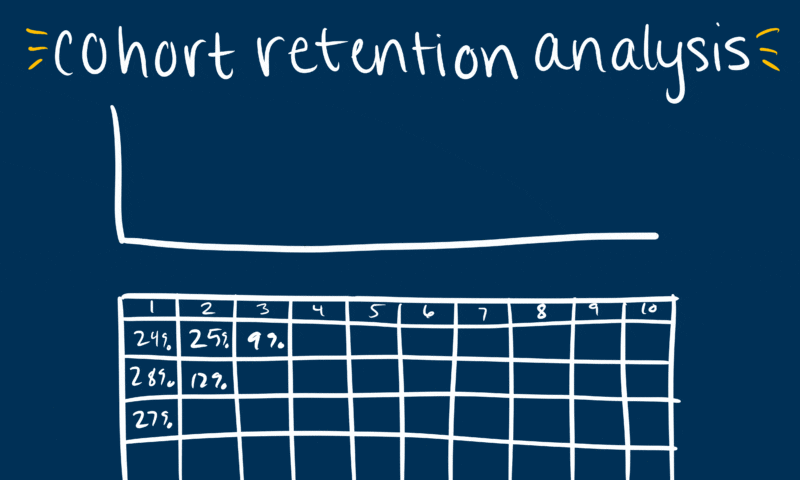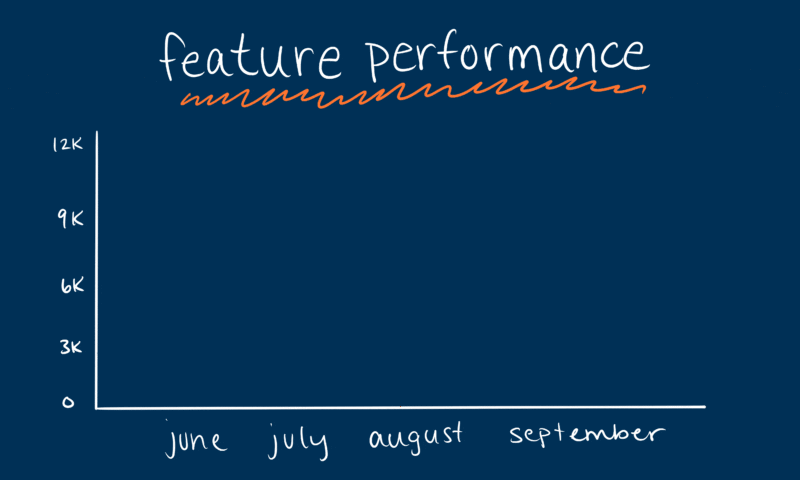- Products
- Pricing
- Solutions
-
-
By Use Case
- Digital Customer SuccessScale effort and align teams using digital-led strategies.
- HealthcareDeliver proactive, preventative care that enables you to retain and grow your customer base.
- Start and Scale FastEssential features and onboarding to help you start and scale with Gainsight in as little as two weeks.
- Scale and EfficiencyDeliver outcomes without adding headcount.
- RetentionPredict churn and address risk.
- ExpansionIdentify and align on expansion opportunities.
- Product AdoptionProactively guide users to value.
-
By Team
- Customer SuccessEmpower and enable your CSMs.
- ProductCreate elegant product experiences.
- Customer ExperienceIdentify trends across the customer journey.
- Revenue and SalesDrive a high performing renewals process.
- IT and AnalyticsConsolidate your Customer Data.
- ExecutivesAlign on customer health and opportunities.
- Community TeamsBuild a modern customer community.
-
-
- Customers
- Resources
- The Latest from GainsightWhat’s new? From blogs to webinars, to guides and more.
-
-
Gainsight Essentials
The Gainsight you know and love just got a whole lot easier. Start and scale with Gainsight - and go live in as little as two weeks! What are you waiting for?
Check it Out- By TopicWe’ve got it all organized by Product, Customer Success, and Community.
-
-
Pulse 2023
Pulse 2023 is more than software’s biggest conference on durable growth. It’s a celebration of ten years of joy, and an invitation to ask what if about a future that’s yet to be written.
Check it Out- Customer ResourcesFind the Gainsight community, certifications, and documentation.
-
-
Gainsight Digital Hub
Create a single destination for your customers to connect, share best practices, provide feedback, and build a stronger relationship with your product.
Check it Out- Industry ResourcesFind a job, discover Pulse, and learn what’s happening industry-wide.
-
-
Industry Resources
- Customer Success Job Board
- Pulse Plus
- Pulse Conference
- Pulse Library
-
Pulse 2023
Pulse 2023 is more than software’s biggest conference on durable growth. It’s a celebration of ten years of joy, and an invitation to ask what if about a future that’s yet to be written.
Check it Out- Essential GuidesIf it’s here, it’s essential knowledge on CS, PX, and community.
- Company
- Impact
- Login
- Schedule a Demo
- Essential GuidesIf it’s here, it’s essential knowledge on CS, PX, and community.
-
- Industry ResourcesFind a job, discover Pulse, and learn what’s happening industry-wide.
- Customer ResourcesFind the Gainsight community, certifications, and documentation.
- By TopicWe’ve got it all organized by Product, Customer Success, and Community.
-
- The Latest from GainsightWhat’s new? From blogs to webinars, to guides and more.
- Products
- Pricing
- Solutions
- Customers
-
Resources
- The Latest from Gainsight
- By Topic
- Customer Resources
- Industry Resources
-
Gainsight Essential Guides
- Quarterly Business Reviews (QBRs)
- Customer Success
- Voice of the Customer
- Customer Success Management
- Customer Journey and Lifecycle
- Professional Services Success
- High Touch Customer Success Management
- Company-wide Customer Success
- Recurring Revenue
- Channel Partner Success
- Product-Driven Customer Success
- Churn
- Budgeting for Customer Success
- Product Analytics
- Customer Experience
- Business Metrics
- Choosing a Customer Success Solution
- Product Management Metrics
- Company
- Impact
- Login
The Essential Guide to
Product Analytics
As a part of the product function, a huge weight lies on your shoulders. You’re tasked with creating the very thing that your business is marketing, selling, and relying on to give them a competitive advantage. On top of that, you’re responsible for driving adoption and usage, but you’re distanced from your users. And how exactly are your product investments impacting the business?
Bridging these gaps requires data—an abundant but under-utilized resource. With the right data and product analytics tools at your disposal, you can make educated decisions, influence stakeholders, and enhance your team’s credibility within the company.
This article will provide you with a solid understanding of what product analytics is, the importance of understanding data, and how to use your product insights in ways that will directly impact your company’s goals.
Chapter 1
Product Analytics 101
For Sales or Marketing, analytics is part of their day-to-day and critical to their success. For product teams, this needs to be the norm too. Product analytics is no longer an auxiliary part of product management, it’s a necessity.
We live in an age of “more” and today’s product teams are evolving to keep up. The sheer amount of options out there have put us all in a tough position.
- More experiences happen within the product
- More products to choose from at the customer’s disposal
- More opportunities for users to have a bad experience and leave for another product
To keep users coming back to your product, businesses need to be hyper-aware of the experiences we provide.
A benefit of living in an age of “more” (or as we’ve referred to it in the past, the Age of the Customer) is that we have more data. To stay competitive, we need to utilize this data to create experiences that will make your product an irreplaceable part of your user’s daily workflow.
Being data-driven requires a new mindset that puts the customer over the company. Most users interact with your company through your product, making it the first line of defense against churn.
It’s up to your entire business to cultivate an experience that keeps users coming back. This doesn’t mean listening to the largest account’s needs, or your executive’s needs, or even the needs of one team over another. It means breaking down silos, having a standardized understanding of the metrics that correlate to company success, and using data to create a product that is held to the standard your customers expect. Companies that understand this will outpace their competitors exponentially—customer-centric companies are 60% more profitable than those who aren’t.
What is Product Analytics?
Product Analytics is the collection, and interpretation of usage data within your product and the application of usage data into more effective decision making. Product Analytics is often used to illustrate how users utilize your product features, predict areas of product friction, and improve the product experience.
Product, Engineering, and Development utilize product analytics to better understand who is using their product and how they are using it. Executives and stakeholders can use product analytics to get real-time insight into how the product is contributing to overall business goals.
Why is Product Analytics Useful?
There are lots of products out there—we all have competitors, no matter what market we sell in. Because of this surplus of solutions, it’s vital that your product meets the needs of your users.
You might be surprised to hear that many companies evolve their product based on internal needs, guesswork, and gut instincts. If you’re not surprised, then this probably sounds all too familiar.
“Market problems should be defined based on multiple sources of data, not just anecdotes from visiting customer offices.”
–Participant of Pragmatic Marketing’s 18th Annual Product Management and Product Marketing Survey
If you’re not using product analytics to make data-driven decisions, you’re never going to create a better product because you will have no idea what “better” means for your users or your business.
While feature delivery is a huge use case of product analytics, there is an often overlooked, yet hugely important, purpose product analytics can play. It provides a way to justify the business impact your product has made. You can show your direct effect on revenue, expansion, churn, and other growth measures.
Product Analytics vs. Product Metrics
There are distinct differences between product analytics and your product metrics—but they go hand-in-hand.
Product analytics finds patterns in your usage data so you can understand it and use it to answer business questions.
Product metrics measure your progress toward achieving your set goals and provide accountability. They’re indicators of success or areas of improvement.
Product metrics vary depending on your goals. For example, if you’re focused on growing your user base, you’ll track metrics like Monthly Active Users (MAU) and Customer Acquisition Cost (CAC). If you’re focused on retention, you’ll focus on metrics like churn and expansion rates.
Chapter 2
How to Use Product Analytics
Now that you understand the need for product analytics, it’s time to dive into how to use them. Having a wealth of data at your disposal can be daunting. Keep in mind the following when you’re deciding what to track and measure:
- What data sources are you pulling from?
- Are you collecting both qualitative and quantitative data?
- Are you measuring this because it looks good or because you can actually use it to grow and improve?
- Have you spoken with your stakeholders and other executives about what is most important to the business and incorporated that into your product analytics strategy?
- Is the way you’re collecting data passed down by the people before you? Does it still work for your current situation?
Your product analytics strategy will evolve over time with your company, so make sure that you’re constantly asking yourself if the information you’re reviewing is still applicable. As you get a feel of what is important to your business, you’ll be able to refine the data and pull out the nuggets of information that are the most valuable.
Questions Product Analytics Can Answer
Product analytics acts as a crystal ball. Ask it a question and it turns data into insights and answers.
Every product professional should always be asking, “Who is using my product and how are they using it?” Knowing the answer to this question will keep your product decisions on the right track and ensure you’re creating a product that your users want.
But much like the future seen in a crystal ball, who your users are and how they’re using your product is subject to change. Whether it’s every quarter or every year, make sure you’re consistently asking yourself the question above and seeking the answer.

You might be surprised how deeply you can dig into your usage data. Any of the following questions (and much, much more) can be answered by product analytics:
- How many users do I have on a daily/monthly basis?
- How long do users stay in my product?
- What is my most used feature?
- What is my least used feature?
- What feature is the leading cause of user drop-off?
- Where are most of our users located?
- What job roles are power users of our products?
- Are people using my newly released feature?
- Where do people go after they use Feature X? Are they getting to Feature Y like I want them to?
- Which features of my product influence the most amount of recurring revenue?
The more powerful your product analytics platform (we’ll get to those in a moment), the more specific your questions can be. Instead of simply asking, “How many users do I have on a monthly basis?” you can ask something as complex as, “How many users in France are in my product on a monthly basis, between the hours of noon and 2:00 p.m., and use Feature X, and then Feature Y?”
Not only will product analytics help you answer these questions, but they’ll also help you track these queries over time. This reveals trends that can impact roadmap decisions and your broader goals.
How to Collect Product Analytics
As a product manager, you’re a problem solver. You know and we know that you could build an in-house solution to collect usage data. But as a delegator and a planner, you know that the resources for this can be taxing and a diversion from other goals. Product analytics isn’t something you wait on—every minute you do, you lose historical data that could’ve revealed critical product flaws. Therefore, if an in-house solution isn’t in the cards, a product analytics solution is a must-have.
When it comes to user data, the problem isn’t how to gather it—that’s fairly easy with the amount of software solutions out there—it’s sussing out what data is most meaningful. To make it as simple as you can, define what success means to your business up front and then decide what you need to track. This will make it easier for you to focus on the right data and glean the most valuable user insights.
The following are useful reports that you can use to better understand your usage data and answer your product questions.
Useful Product Analytics Reports
Cohort Retention Analysis

You have a limited amount of time to guide users to realize the value of your product. What features are driving retention? Knowing how well your product retains its users is key to long term growth. Cohort retention analysis also allow you to assess if your product has achieved product market fit.
Journey Analysis

How did this specific user get to this specific feature? Where did they go next? Every user is unique in the way they learn and adopt your product. Journey analysis helps you visualize this activity and surface unexpected behaviors.
Funnels Analysis

Mentioned in the example above, Funnels Analysis help identify where users fall off from your product, whether it’s completing an order, building a report, or other common activities.
Feature Performance

Are people using your features? And more importantly, did it influence revenue? Analyzing Feature Performance can help you discover the features that are impacting revenue and customer lifetime value. The more connected your analytics solution is with other customer systems of record—like a CRM—the more trends you can spot across segments and slice and dice by user and account level attributes.
Chapter 3
Justifying Business Impact with Product Analytics
The rise of the subscription model might’ve put more pressure on product and customer success teams, but it’s also given them more of a seat at the table. In the past decade, the focus has expanded beyond just Sales and Marketing. Now it’s not just about what gets a customer to buy, it’s all about keeping them around to renew and expand.
It’s new and exciting while also being nerve-wracking because there are still so many ways to approach justifying the impact of your product on the business. The short of it is that no two businesses will be exactly the same. However, there are some general tips that all product leaders can benefit from.
Use Objective Metrics That Promote Progress
With the vast amounts of data out there, it can be easy to get lost in the weeds. We’ll say it again: always make sure what you’re measuring leads back to business value.
In his article on deciding metrics of value, Clement Kao shares an 8-step framework that takes into account qualitative and quantitative data:
- Determine the key drivers of the business
- Select the single driver you want to focus on
- Define a qualitative north star objective
- Define a north star metric
- Decompose the north star metric into qualitative problem areas
- Define product metrics that capture each problem area
- Solve a problem area and measure progress
- Iteratively knock out problem areas
Read Part Two of the series here to see the process in action. This framework can help you define the important metrics to track and share with your executive team, which leads us to our next point…
Present the Right Information to Your Board
The product in many ways is a leading indicator of both customer health and customer happiness. It indicates where there are opportunities to increase value for that customer, drive expansion, and increase overall health and happiness of that customer. So, there’s a growing awareness that more time needs to be spent on Product in board meetings—and the discussion needs to become more quantified, like Sales.
You might feel the need to stuff your board packet full of great stats and insights, but your CEO and board members really want to know how your product is influencing the bottom line.
Provide a structure during your presentation and tie your usage trends with broader company goals. Provide a story that connects your initiatives with quantifiable impact. This will keep your discussion on track and keep the conversation flowing in a way that is constructive and easier to take action on.
During Gainsight’s board meetings, we present the following:
- Recurring KPIs (Key Performance Indicators)
- Reports on Company Initiatives
- Analysis of Challenges and Opportunities
Chapter 4
Finding the Right Product Analytics Solution For You
There are lots of different product analytics tools out there, so it’s important you do your due diligence to find the one that’s right for you. Read the reviews, interact with free trials, and watch as many demos as you can. During your evaluation, ask the following questions:
- How does it connect with your product to get product usage data?
- Does it integrate with the other systems you use to drive customer outcomes (Zendesk, Gainsight, etc.)?
- Will it slow down the performance of your product?
- Was it purpose-built for SaaS products or was it originally created to track web activity?
Working Better Together
We’ve focused a lot on the importance of linking your product decisions to overall business goals. As part of that goal, the product analytics tool you select should go beyond helping the product team and be useful cross-functionally.
The more people that have visibility into your usage and product performance data, the better. It drives cross-functional accountability and keeps everyone on the same page. A good product analytics solution will be usable across multiple teams and for your executives as well. It will integrate with the programs your support and customer success teams use so they can get quick access to meaningful customer data. Democratizing your data like this can benefit other departments in the following ways.
Customer Success can use the data to:
- Identify at risk customers
- Deliver better business reviews
- Make proactive recommendations to customers so they can use your offering more effectively
Sales can use the data to:
- Get insight into what your prospects doing in their proof of concept demo
- Identify the right time to reach out to a prospect that’s going through a free trial experience
Marketing can use the data to:
- Identify customer champions and power users for case studies, webinar speakers, and customer references
- Tailor their messaging so it sets the right expectations for users and prospective users
Turning Insights into Action
There are many great product analytics solutions on the market that will capture data and give insight into user activity. But today, product analytics is just table stakes. Once you know how many users are in your product and what they’re doing, the next step is to influence these areas to create a better product experience and promote business growth. To operationalize your insights, you need a combination of:
- In-app engagements including guides and notifications to increase awareness and drive adoption
- In-app surveys to gauge user sentiment
- Email capabilities to re-engage inactive users
That’s where Product Experience Platforms make a difference. A Product Experience Platform provides the product analytics component, as well as the tools to act on those insights.
Gainsight PX for Product Analytics
Gainsight PX is Product Experience Platform that provides both product analytics and a series of tools to drive product adoption and collect user feedback.
Purpose-built for SaaS, our all-in-one solution enables you to track every step of your user’s journey and understand how they’re traveling through and interacting with your product. Product, Customer Success, Growth, Sales, Marketing, and your executives can dig deeply into this data to derive insights on an individual user level or account level and then use those insights to drive larger business goals—no coding required.
Try Gainsight PX for free and start collecting that valuable usage data today.
See Gainsight in Action!
-
Products
Platform
-
Solutions
- Healthcare
- Education
- Security
- Customer Success Teams
- Product Experience Teams
- Product Adoption
- Gainsight Essentials
Industries and Teams
-
Resources
-
Gainsight
© 2024 Gainsight, The Customer Success Company. All rights reserved. // 350 Bay Street, Suite 100, San Francisco, CA 94133 // +1 (888) 623-8562
Terms and Conditions // Privacy // Do not sell my personal information // Security